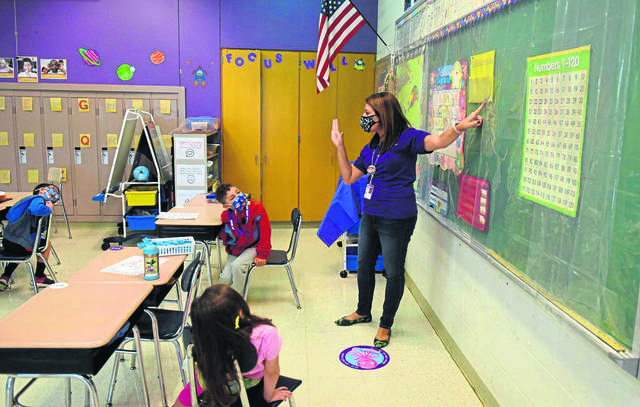Editorial: The ever-confusing state covid guidelines for schools
It has to be difficult to be a school in the pandemic.
Sure, there are lots of other institutions working hard to figure out what’s happening and what to do about it. Hospitals, nursing homes, churches. Even grocery stores and baseball teams have been in turmoil because of covid-19.
But has anything been tugged in different directions the way schools have?
They are responsible for educating kids. They are also charged with keeping them safe. Those goals are hard to reconcile with each other when one side says children should be at their desks, learning about fractions and William Shakespeare, and the other says they should be as far apart as possible to keep the coronaviruses from hopscotching through the room.
It would be helpful if the state and federal government could get on the same page. Sometimes over the past 13 months, it has seemed like they weren’t even reading the same book.
In March, the Centers for Disease Control and Prevention updated its recommendations for returning schools to normal. It reduced distances from 6 feet to just 3 feet. It stopped pushing for plastic barriers. The moves allowed for “safe in-person instruction (that) gives our kids access to critical social and mental health services.”
State guidelines still leave districts in limbo. Hempfield, Norwin, Belle Vernon Area, Derry Area and Penn-Trafford districts all have had closures in the last week due to positive tests. The state departments of health and education draw lines in the sand based on how big the school, how many covid cases popped up and how dense spread is in the community. When the threshold is crossed, schools close and learning goes remote.
The state guidance lags behind the advent of vaccinations, even while Pennsylvania data show more than 6 million residents have had at least one dose. In Allegheny County, it’s 53.6% of the population; in Westmoreland, it’s 41.2%.
If the state can point to such well-saturated vaccine coverage, it should consider updating its guidance for districts.
Of course, there is just a month or so left in the school year, so maybe nothing will change now just for consistency. But the state should definitely be looking ahead to August and trying to work with districts on plans that are less reactive and more proactive.
Remove the ads from your TribLIVE reading experience but still support the journalists who create the content with TribLIVE Ad-Free.

